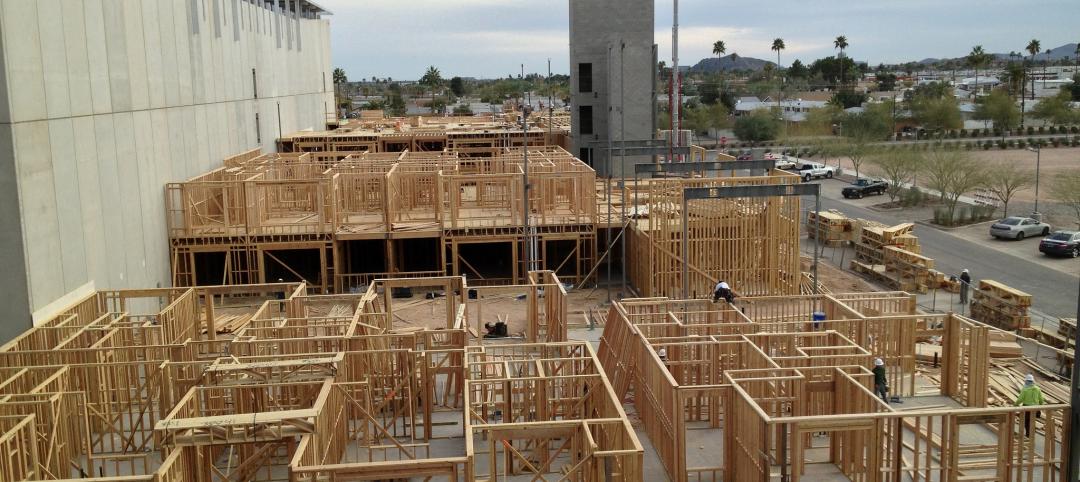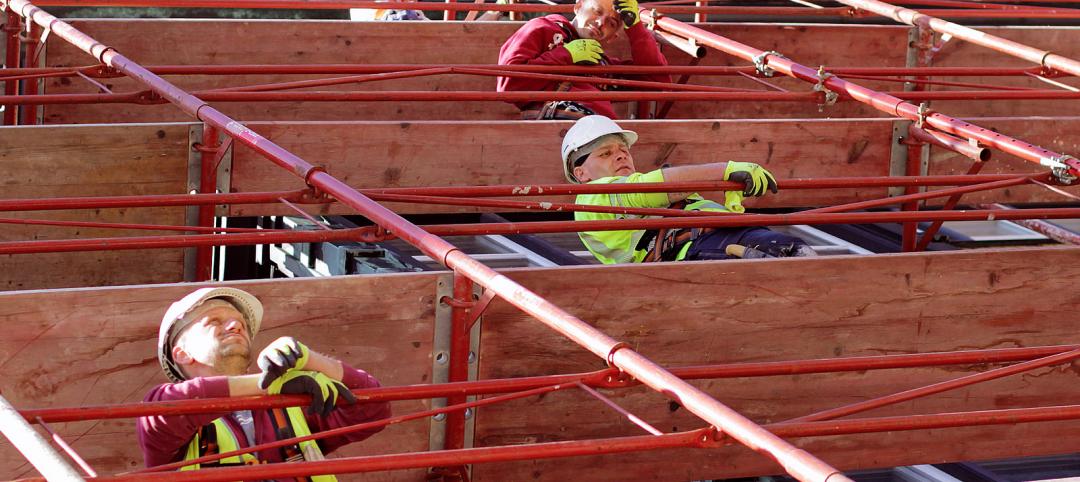Is the construction industry up to the challenge of repairing the world’s crumbling infrastructure? A new report from McKinsey & Co. answers with a definitive “No,” unless the industry can place itself firmly into the digital future in its organization, documentation, management, and information sharing.
The think tank estimates that the world will need to spend $57 trillion on infrastructure by 2030 just to keep pace with global economic growth. A recent report by three of its researchers also sees a construction industry that takes 20% longer than scheduled to finish most projects that come in up to 80% over budget.
“Construction productivity has actually declined in some markets since the 1990s,” writes the report’s authors, Rajat Agarwal, Shankar Chandrasekaran, and Mukund Srishar, in an article they posted last month. “The construction industry is ripe for disruption.”
Such observations are hardly new; there have been myriad other reports that lament the same problems in the construction sector, and fret about how massive reconstruction can possibly be accomplished.
What makes this paper a little different is that the “five big ideas” proposed by its authors aren’t at all futuristic.

Five trends that are making the construction process run smoother and quicker. Image: McKinsey & Co.
The authors basically believe that the construction industry needs to be reorganized around digital technology, including:
•Higher-definition surveying and geolocation
•Next-generation 5D BIM
•Digital collaboration and mobility
•The Internet of Things (IoT), coupled with advanced analytics
•Future-proof design and construction with sustainable materials and methods.
Within these trends, McKinsey sees LIDAR as “an evolution in surveying,” primarily because of breakthroughs in drone technology and handheld platforms.
Five-D BIM goes beyond 3D BIM by taking into account a project’s cost and schedule. “The visual and intuitive nature of 5D BIM gives contractors a better chance to identify risk earlier, and thus to make better decisions.” Augmented reality technology will further enhance the effectiveness of 5D BIM, which project owners and contractors “need to incorporate right from the design stage.”
McKinsey revisits the need for the construction sector to move aggressively toward online communication as a way of improving productivity. Paper, the report argues, makes data analysis among team members tougher, and is subject to being mismanaged among different stakeholders.
By comparison, the authors point to an American tunnel project that involved 600 vendors, for which the contractor developed a single platform for bidding, tendering, and contract management. “This saved the team more than 20 hours of staff time per week, and cut down the time to generate reports by 75%,” they write.
Perhaps more to the point, the digital-collaboration and mobility solutions segments have attracted close to 60% of all venture capital funding in the construction-technology sector.
The report also suggests several advantageous potential uses for IoT working in combination with sensors and near-field-communication devices. These uses include equipment monitoring and repair, inventory management and ordering, quality assessment, energy efficiency (such as sensors monitoring ambient conditions and fuel consumption of equipment), and safety.
As for future proofing projects, the report lists a host of new building materials—self-healing concrete, aerogels, nanomaterials—and construction approaches—like 3D printing and preassembled modules—that could lower cost and speed up the construction process.
“Some of these ‘materials of the future’ could redefine how projects are conceptualized, designed, and executed,” states the report. It notes, however, that adoption of these materials has been slowed by a lack of awareness and availability, limited supply chain, and the industry’s risk aversion.
While 80% of all construction work is still done on-site, more project developers and contractors are deploying off-site approaches “that help them improve predictability, consistency, and repeatability.” These approaches include preassembly of components and simply structures, 3D printing, and robot-assembled construction.
None of these recommendations will surprise any nonresidential contractor. The question, though, is why aren’t these ideas being implemented more widely? The McKinsey authors say the industry needs “to adopt a new mindset” whose foundation is shared responsibility, and has four principles:
•Transparency and risk sharing in contracts
•Return-on-investment orientation
•Simplicity and intuitiveness in the design of new solutions
•Change management (as in top management communicating clearly why changes are important)
Project owners and developers need to mandate the adoption of digital technologies and measure results. This should include appointing a Chief Technology Officer or Chief Innovation Officer who can think boldly about the company’s digital agenda.
Engineers and contractors need to develop “digital road maps” for project management. “And it’s important to ensure that project teams have the budgets and authority they need to pilot new technologies. It’s essential to build the capabilities of project managers so they can become digitally adept.”
Related Stories
Market Data | Dec 15, 2015
AIA: Architecture Billings Index hits another bump
Business conditions show continued strength in South and West regions.
Industry Research | Dec 8, 2015
AEC leaders say the 'talent wars' are heating up: BD+C exclusive survey
A new survey from Building Design+Construction shows that U.S. architecture, engineering, and construction firms are being stymied by the shortage of experienced design and construction professionals and project managers.
Market Data | Dec 7, 2015
2016 forecast: Continued growth expected for the construction industry
ABC forecasts growth in nonresidential construction spending of 7.4% in 2016 along with growth in employment and backlog.
Contractors | Dec 2, 2015
FMI: Nonresidential construction in a slowdown, according to latest NRCI score
“Economic recovery momentum is losing steam and rising costs in labor and materials start to put a load on the industry,” said Chris Daum, President and CEO of FMI.
Contractors | Dec 2, 2015
ABC releases scorecard on state policies affecting the construction industry
The scorecard website identifies states that have good environments for merit shop contractors, like Arizona, and states that could improve conditions, like New York.
Contractors | Dec 1, 2015
ABC: September's nonresidential spending retains momentum in October
Spending increased in 10 of 16 nonresidential construction sectors on a monthly basis.
Greenbuild Report | Dec 1, 2015
Data centers turn to alternative power sources, new heat controls and UPS systems
Data centers account for 2% of the nation’s electricity consumption and about 30% of the power used annually by the economy’s information and communications technology sector, according to the National Renewable Energy Laboratory.
Contractors | Dec 1, 2015
The contractor’s role in promoting job site sustainability [AIA course]
Robins & Morton’s Jackie Mustakas offers specific actions that contractors and construction managers can take to green every job site.
Contractors | Nov 30, 2015
Sundt Construction opens its own craft employee training center
The contractor's Center for Craft Excellence, in Phoenix, is in response to the labor shortages in the industry.
Contractors | Nov 24, 2015
FMI survey: Millennials in construction get a bad rap, tend to be loyal, hard-working
While the stigma exists that Millennials are entitled, disloyal, and lazy, it appears that this is not true, according to a new report from FMI.










![The contractor’s role in promoting job site sustainability [AIA course] The contractor’s role in promoting job site sustainability [AIA course]](/sites/default/files/styles/list_big/public/Screen%20Shot%202015-12-01%20at%209.07.23%20AM.png?itok=UyfyfxCn)





